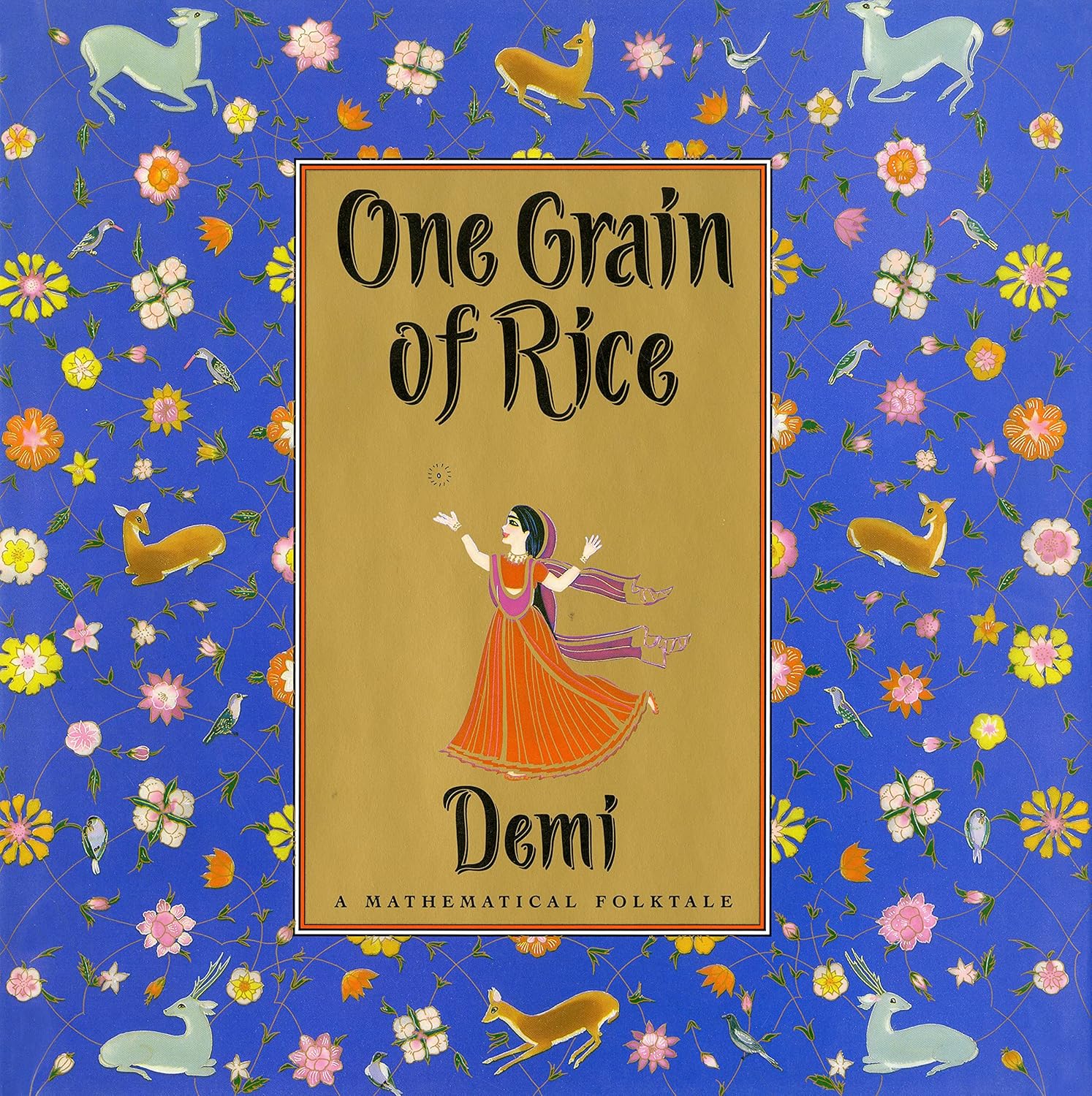
Description:
About this item:
Editorial Reviews
Review:
4.9 out of 5
98.46% of customers are satisfied
5.0 out of 5 stars Great story and illustrations
Wonderful story that gets kids curious about math. Very detailed and beautiful illustration. Highly recommended.
5.0 out of 5 stars Delightful!
Wonderful story and illustrations! Love the math connection.
5.0 out of 5 stars Beautiful drawings
Love this story
5.0 out of 5 stars Every child should have this!
This is one of my favorite children's books. I buy it for babies, toddlers, young kids, and their parents.No matter what age, there is something for you. A beautiful story, gorgeous illustrations, a glimpse of an old multicultural tale.Math! Kindness! A clever little girl!She's not a princess, and she doesn't need to marry a prince. Her kindness, compassion, love for her community and math skills will help her feed a starving community. math + kind girl = change the world
5.0 out of 5 stars Exquisite
Gorgeous book! Magical illustrations. Fantastic story to help build understanding of doubling. Must have in all third grade and up classrooms.
5.0 out of 5 stars Book was in perfect condition!
This book is a wonderfully illustrated story/fable about a “simple” village girl using the power of doubling to get enough rice from the king to feed all the people during a famine. I’m looking forward to using it in my Montessori classroom. But it is wonderful for any 6-9 year old. Whether they need inspiration to love numbers, or already do ;)
5.0 out of 5 stars Timeless message!
Great book!!! Children ages 5-10 will love it, especially if you have math wizards in your house! Even as an adult I loved reading it, as it carries such a timeless message and great story, which is a rarity among children's books these days. Don't hesitate to buy it, it will become one of the favorite books in your home library. We also have another book by Demi "The empty pot", another great book to buy!
4.0 out of 5 stars Refreshing Reading
I am a fan of "A Mighty Girl" and found this book through their listings and recommendations. I bought it for my granddaughter's fourth birthday because it is about an ordinary girl, not a princess. It is a wonderful folktale based on the importance of standing up for yourself and your community and being willing to do great things by taking a first step toward your convictions. The great math lesson is a bonus! The book is beautifully illustrated and of good quality. I look forward to reading it with my granddaughter for years to come.
Fantastic read / learning opportunity
Intermediate students love estimating and trying to figure out how many grains of rice will be given to the young girl at the end of the month. Makes for a great math lesson.
Beautiful
Lovely book, good quality
What a story!!!
Never knew this folk tale until I read this one. What a book!! How beautifully designed!!
A simple story
My 6 year-old grandson didn't want to look at this book when he was first given it (perhaps because it has a girl on the front!), but once he'd read it and looked at the maths he was hooked. The illustrations are beautiful, and the maths interesting for inquiring young minds.
Five Stars
adorable book, lovely gift
Visit the Scholastic Press Store
One Grain of Rice: A Mathematical Folktale
BHD1073
Quantity:
Order today to get by
Free delivery on orders over BHD 20
Product origin: United States
Electrical items shipped from the US are by default considered to be 120v, unless stated otherwise in the product description. Contact Bolo support for voltage information of specific products. A step-up transformer is required to convert from 120v to 240v. All heating electrical items of 120v will be automatically cancelled.
Share with
Or share with link
https://www.bolo.bh/products/U059093998K